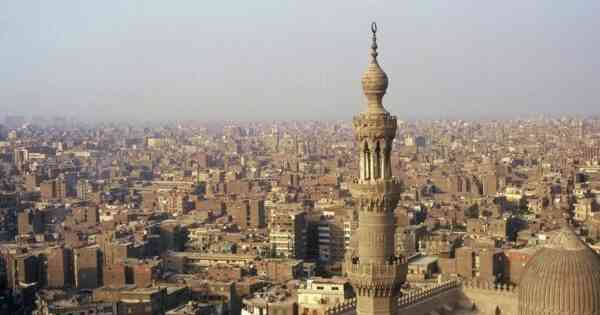The noisy, hot, dusty Egyptian capital Cairo is a truly amazing city. It is located on the banks of the Nile, in a thin «green strip» on the banks of a great river, and on all sides it is surrounded by an endless desert. Most tourists staying at Egyptian resorts do not particularly go beyond the hotel, and in vain, because in Cairo you can enjoy the special, unique flavor of this city. Sure, not everyone will like it, but trying to walk along its streets in person is not such a bad idea.
Facts about Cairo
- In winter, nighttime temperatures are sometimes drops to +10 degrees, or even lower.
- Many Egyptians call Cairo otherwise – Masr, and in the same way they call all of Egypt as a whole. Thus, the locals associate Cairo with Egypt, and Egypt with Cairo.
- It rains very rarely in Cairo, sometimes only a few times a year. As, however, in Egypt as a whole (interesting facts about Egypt).
- Cairo, with a population of about 10 million people, is the largest of the Middle Eastern cities. And taking into account the suburbs, there are already more than 20 million people here.
- Surprisingly, despite the huge size and darkness of people, there are only 9 traffic lights in Cairo. It’s better not to drive here. Cairo is considered one of the most difficult to drive and accident cities on Earth.
- In Egypt, on the outskirts of Cairo, is the Manshiyat Nasir quarter, also known as the Scavenger City. More than 40,000 Christian Copts live here, who collect garbage from all over Cairo for the purpose of its subsequent processing and disposal, passing this craft by inheritance. The Copts have monopolized this activity because the Muslims consider it “unclean”, since the food waste goes to feed the pigs. A persistent unpleasant odor hovers in the quarter, but the huge metropolis is kept relatively clean.
- The famous Cairo tower was built with funds intended to bribe the first president of Egypt, General Naguib. However, the bribery attempt failed, the money was confiscated, and they decided to spend it on the construction of the symbol of the new Egypt.
- The western part of Cairo was built according to the Parisian model – spacious boulevards and quiet parks dominate here. The eastern part of the city, in contrast, is a labyrinth of narrow streets, haphazardly erected ancient buildings and hundreds of mosques.
- According to information received by WHO (World Organization Health), the atmosphere in Cairo is so polluted that breathing it all day long is like smoking a pack of cigarettes.
- On average, only 24 mm of precipitation falls here annually.
- Although the name of the city comes from the Arabic language (“Al-Kahira” – “Victorious”), Coptic etymology is also widespread, where “Kahira” is translated as “Land of the Sun”.
- In some areas of Cairo, population density exceeds 100 thousand people per square kilometer. Although on average in the city, the first among the cities of the world in terms of population density is still held by the Philippine capital Manila (interesting facts about the Philippines).
- Public transport in Cairo is represented by buses, 3 metro lines and even trams. However, the most popular form of transport for tourists here is a taxi. It is relatively cheap in Cairo, however, taxi drivers still try to tear three skins from tourists.
- Almost 2 thousand years ago, the Romans built a fortress on the territory of modern Cairo, calling it the Egyptian Babylon.
- Cairo has the largest market in Africa.
- The Cairo Museum is the world’s largest repository of ancient Egyptian artefacts and art. Its collection consists of about 120 thousand exhibits. During mass protests in Cairo in 2011, citizens formed a human ring around the museum to prevent it from being looted. Nevertheless, marauders managed to steal 18 most valuable artifacts from the vault.
- The famous Egyptian pyramids are located in the ancient city of Giza, which today is one of the suburbs of Cairo. What to do – the capital is growing.
- Among all the capitals of the world, Cairo is the driest in terms of annual rainfall.
